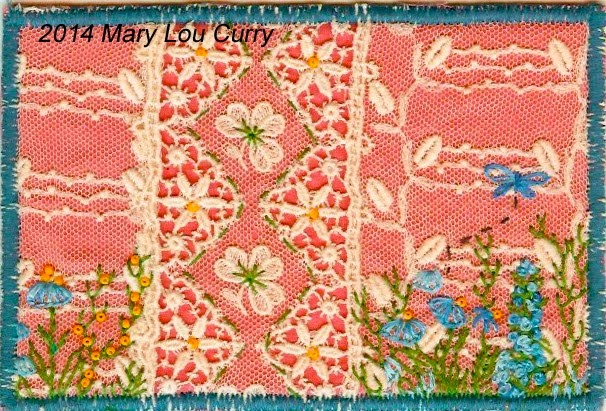 |
| Redwork by machine embroidery |
Here are a few links to
explore from some talented bloggers:
- Alcohol Ink
- Applique
- Batik
- Beaded embroidery
- Bleach discharge
- Bobbin work
- Chenille
- Couching
- Crazy quilting
- Decorative machine stitches
- Foundation piecing
- Free motion quilting
- Fusible Fussy cutting
- Hand embroidery
- Machine embroidery
- Marbling
- Needle felting
- Paper piecing
- Patchwork
- Photo transfer
- Pin weaving
- Pleating
- Quilting by hand or machine
- Red work by hand or machine
- Reverse applique
- Rubberstamping
- Rusting
- Shadow work
- Smocking
- Stenciling
- Sun printing
- Thread painting
- Tie dye
- Weaving
- Yo-Yo’s
- Zentangle








